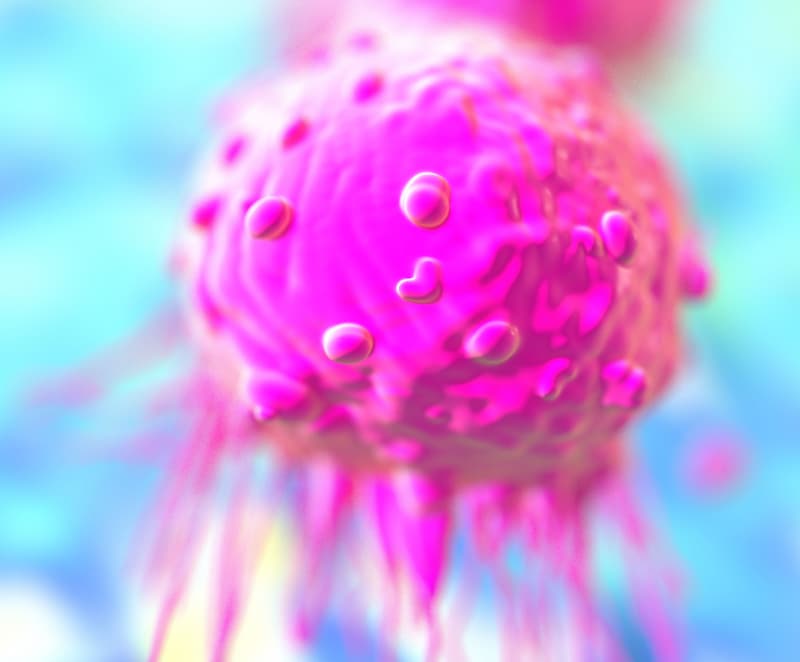Novel ADC Shows Activity in HER2-Positive Breast Cancer
Data show no significant differences in pCR rates across treatment arms in the phase 2 FASCINATE-N trial.
“In the era of the ADC combinations, whether that’s immune therapy or endocrine therapy, we hope SHR-A1811 can serve as a backbone for future treatment,” according to study author Junjie Li, MD.

Promising efficacy and acceptable tolerability were reported among patients with HER2-positive breast cancer who received treatment with the novel third-generation antibody-drug conjugate (ADC) SHR-A1811, according to data from the phase 2 FASCINATE-N trial (NCT05582499) presented at the 2024 San Antonio Breast Cancer Symposium (SABCS).
Patients were randomly assigned to receive either SHR-A1811 (n = 87; arm A), the combination of SHR-A1811 plus pyrotinib, a tyrosine kinase inhibitor approved in China (n = 88; arm B), or nab-paclitaxel combined with carboplatin, trastuzumab (Herceptin), and pertuzumab (Perjeta; PCbHP; n = 90; arm C).
“The standard 4-drug regimen is quite efficacious, with pathological complete response [pCR] rates around 65%. Identifying a better regimen with an improved pCR rate is a challenge,” Junjie Li, MD, associate chief physician, Fudan University Cancer Hospital, Shanghai, China, said during a presentation of the data.1
Eligible patients had early stage or locally advanced breast cancer, pathologically confirmed HER2-positive breast cancer, and had an ECOG performance status of 0 or 1. After 24 weeks of treatment, patients underwent surgery. The primary end point was pCR and secondary end points were objective response rate, invasive disease-free survival, overall survival, and safety.
Based on Bayesian analysis of pCR rates for the first 60 patients in each treatment arm, the trial enrolled 265 patients.
“The pCR rate was measured after every 20 patients underwent surgery in each arm,” Li said.
Patients were stratified into different subtypes using multiomic characteristics to evaluate the efficacy of precision-based targeted therapies compared with standard neoadjuvant chemotherapy.2
Investigators noted that if the treatment arm achieved a pCR rate greater than 95% compared with the control arm, then the treatment was effective. If the treatment arm had a pCR rate of less than 5%, then the treatment arm was determined to be futile.
In the overall population, the pCR rate was 63.2% in arm A, 62.5% in arm B, and 64.4% in arm C. When evaluating for hormone receptor (HR) status, in patients who were HR-negative, the pCR rate was 74.5% in arm A, 76.0% in arm B, and 71.7% in arm C, respectively. In patients who were HR-positive, the pCR rates were 50.0% in arm A, 44.7% in arm B, and 54.1% in arm C.
“There was no significant difference in pCR rate among the SHR-A1811, SHR-A1811 plus pyrotinib, and PCbHP groups,” Li said.
Eighty-four patients completed neoadjuvant treatment in the monotherapy arm, 87 patients completed treatment in the combination arm, and 88 patients completed treatment in the PCbHP arm.
Patients were a median age of 50 years in arm A, 47 years in arm B, and 50 years in arm C. Forty-six percent of patients in arm A were HR-positive, 43.1% in arm B, and 41.1% were in arm C, respectively. HR-negative status rates were similar, with 54.0% in arm A, 56.9% in arm B, and 58.8% in arm C, respectively.
“Ninety percent of patients were node positive and about 70% of patients had stage III disease,” Li said.
Tumor diameters were also measured by breast MRI and conducted after every 2 cycles, noted Li. “Patients across all 3 arms showed similar retraction rates, with about a 55% decrease after cycle 2 and a 75% decrease after cycle 4,” Li said.
An analysis of pCR by subgroup indicated similar efficacy across the arms. “Interestingly, if the patient had baseline tumor stage II, we observed a pCR rate of 88.9% for patients in arm A, with 24 of 27 patients achieving pCR,” Li said. “In patients with primary stage III disease, patients in arm B had a pCR rate of 64.6%, which needs further evaluation,” he continued.
Grade 3 to 4 treatment-related adverse events (TRAEs) were observed in 39 patients (44.8%) in arm A, 63 patients (71.6%) in arm B, and 35 patients (38.8%) in arm C. Nine patients (10.3%) in arm A, 15 patients (17.2%) in arm B, and 12 patients (13.3%) in arm C, had AEs that led to dose reductions. Five patients (5.7%) in arm A, 26 patients (29.9%) in arm B, and 15 patients (16.7%) in arm C experienced AEs that led to treatment discontinuation.
“In the era of the ADC combinations, whether that’s immune therapy or endocrine therapy, we hope SHR-A1811 can serve as a backbone for future treatment,” Li concluded.
References
- Li J. HER2-directed antibody-drug conjugate SHR-A1811 in the neoadjuvant treatment of HER2-positive early breast cancer: a prospective, randomized, open-label, phase 2 trial. Presented at: 2024 San Antonio Breast Cancer Symposium; December 10-13, 2024; San Antonio, TX. GS1-04.
- Zuo WJ, Chen L, Shen Y, et al. Rational and trial design of FASCINATE-N: a prospective, randomized, precision-based umbrella trial. Ther Adv Med Oncol. 2024;16:17588359231225032. doi:10.1177/17588359231225032